
Children creat a 3 dimensional model of various constellations to learn how 2d images are actually 3d.
- Subject:
- Astronomy
- Physical Science
- Material Type:
- Activity/Lab
- Provider:
- Astronomical Society of the Pacific
- Date Added:
- 08/08/2022

Children creat a 3 dimensional model of various constellations to learn how 2d images are actually 3d.
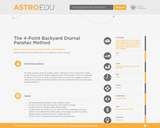
On field, students have to image a given asteroid on two consecutive nights, producing two sets of images obtained over 10-15 minutes, each set separated by about 4-5 hours. In class, students have to process the images in order to measure the observed diurnal parallax and then determine the corresponding asteroid distance.

An activity combining language and science to encourage students to think about the night sky to help them write a poem related to astronomy.

Children match pictures of the Moon on cards with matching pictures on a banner that shows the Moon phase cycle.

Accompanying resource to "Bear Shadow Activity." Children learn how the location of a light source changes how shadows appear.

Using photographs and models, students are taken on a virtual journey to outer space. They can look back at the Earth as they travel further away and see it growing increasingly smaller, giving the experience that we live on a tiny planet that floats in a vast and empty space.
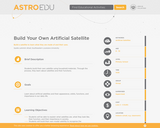
Students build their own satellite using household materials. Through the process, they learn about satellites and their functions.
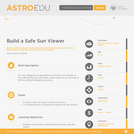
It is very dangerous to look directly at the Sun, even briefly. In this craft activity, you will create a safe viewer so you can look at the Sun without damaging your eyes.

Children design and build a vehicle for exploring another world, using recycled materials.
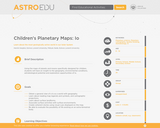
Using planetary maps, students will be able to read cartographic information and compare the environmental conditions of Io to those Earth. They will understand the conditions needed for life to exist, and be able to explain why it cannot exist on Io.
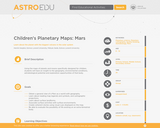
Using planetary maps, students will be able to read cartographic information and compare the environmental conditions of Mars to those Earth. They will understand the conditions needed for life to exist, and be able to explain why it cannot exist on Mars.
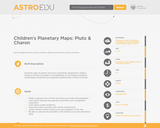
Using planetary maps, students will be able to read cartographic information and compare the environmental conditions of Pluto/Charon to those Earth. They will understand the conditions needed for life to exist, and be able to explain why it cannot exist on Pluto or Charon.

Using planetary maps, students will be able to read cartographic information and compare the environmental conditions of The Moon to those Earth. They will understand the conditions needed for life to exist, and be able to explain why it cannot exist on The Moon.
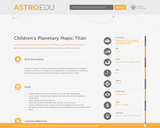
Using planetary maps, students will be able to read cartographic information and compare the environmental conditions of Titan to those Earth. They will understand the conditions needed for life to exist, and be able to explain why it cannot exist on Titan.
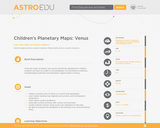
Using planetary maps, students will be able to read cartographic information and compare the environmental conditions of Venus to those Earth. They will understand the conditions needed for life to exist, and be able to explain why it cannot exist on Venus.
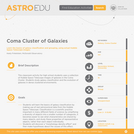
This classroom activity for high school students uses a collection of Hubble Space Telescope images of galaxies in the Coma Cluster. Students study galaxy classification and the evolution of galaxies in dense clustered environments.

Children love to sing! Constellation Song is easy to sing, and scientifically accurate!
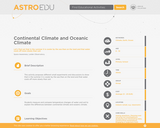
This activity proposes different small experiments and discussions to show that in the summer it is cooler by the sea than on the land and that water cools off more slowly than soil.

Students compress the age of the universe to a 12 month calendar to understand how old the universe is, and get a sense of the cosmic time scale.
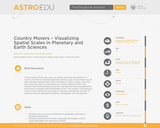
Students learn about local and planetary physical geography / geology, toponymy, planetary landing site selection and cartography. The students learn a complex process of landscape evaluation and city planning, based on the interpretation of photomaps or digital terrain models.